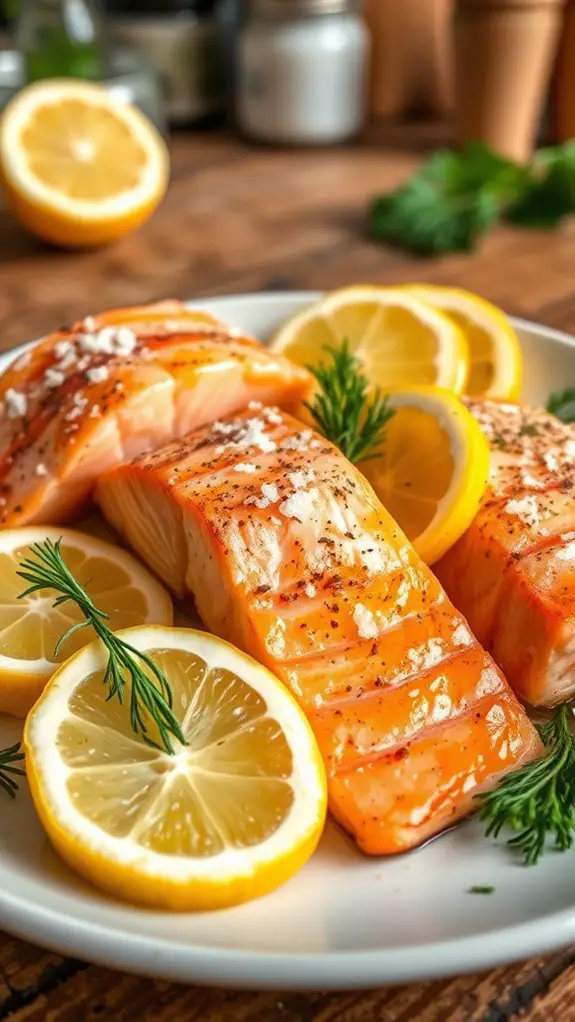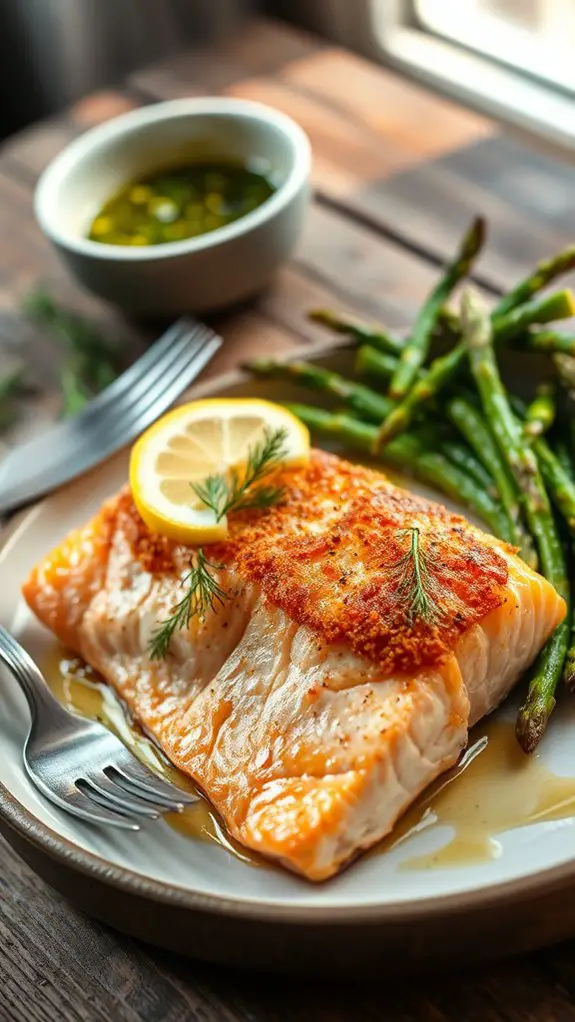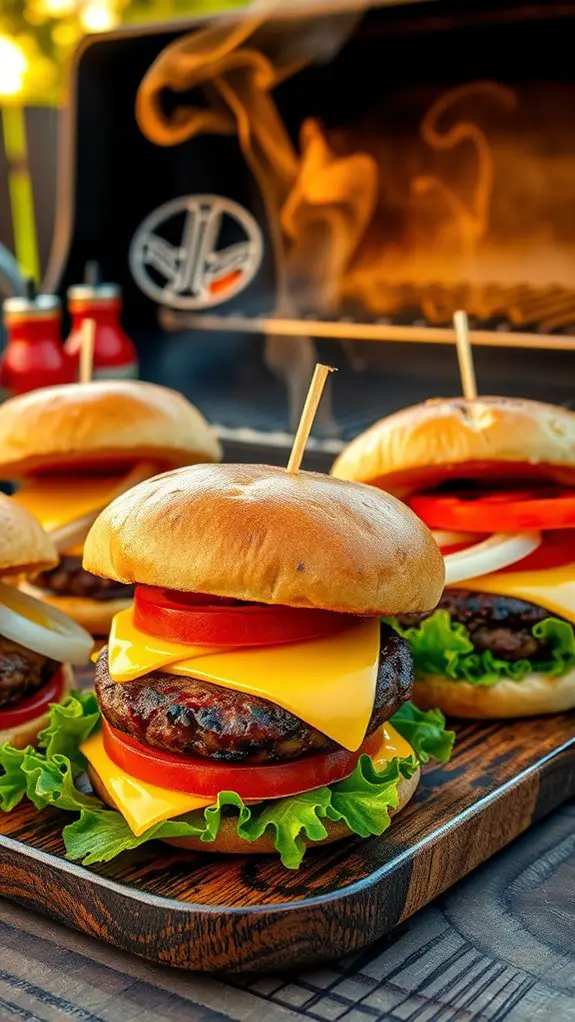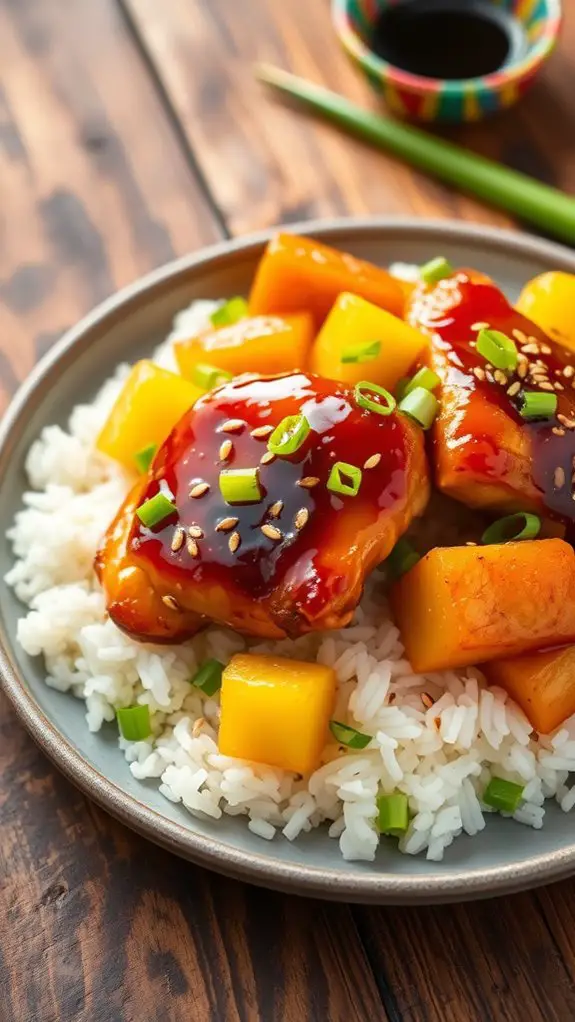Salmon Oven Baked

You'll be amazed at how straightforward oven-baked salmon can be. With just a few pantry staples, you'll reveal a world of flavor and nutrition. The key lies in the careful temperature control, ensuring your fish remains moist and delectable. But there's more to this simple recipe than meets the eye. Uncover the history, discover the nutritional benefits, and explore the possibilities that make oven-baked salmon a go-to choice for health-conscious foodies.
History

Although the origins of baked salmon can be traced back to ancient civilizations, the modern technique of oven-baking salmon gained popularity in the mid-20th century.
Salmon's cultural significance as a dietary staple led to the development of various cooking techniques, including oven-baking. This method allowed for greater control over temperature and cooking time, resulting in a tender, flaky texture and preserving the fish's natural flavors.
The rise of suburban kitchens and electric ovens further contributed to the widespread adoption of oven-baked salmon, making it a convenient and versatile meal option for families.
Today, oven-baked salmon remains a beloved dish, showcasing the evolution of cooking techniques and salmon's enduring cultural importance.
Recipe

Baked salmon is a simple and delicious way to prepare this nutritious fish. This recipe produces a moist, flavorful fillet that can be easily customized to your taste. Oven-baking is a hassle-free method that allows the natural flavors of the salmon to shine.
The key to success with this dish is to not overcook the salmon. Salmon is best when it's cooked to an internal temperature of 145°F, which leaves it tender and juicy. Be sure to keep a close eye on it during the baking process.
- 4 salmon fillets (about 6 oz each)
- 2 tbsp olive oil
- 1 tsp salt
- 1/2 tsp black pepper
- 1 lemon, cut into wedges (optional)
Preheat the oven to 400°F. Line a baking sheet with parchment paper. Place the salmon fillets on the prepared baking sheet and brush the tops with olive oil. Season with salt and pepper. Bake for 12-15 minutes, or until the salmon flakes easily with a fork.
Serve the baked salmon immediately, with lemon wedges if desired. For best results, let the salmon rest for 5 minutes before serving. This allows the juices to redistribute throughout the fish.
You can also experiment with different seasonings, such as dill, garlic, or Cajun spice, to customize the flavor profile.
Nutritional Guide
Salmon is a nutrient-dense food that offers a variety of health benefits.
It's rich in omega-3 fatty acids, which promote heart health and reduce inflammation. Additionally, salmon is a good source of high-quality protein, vitamins, and minerals, including vitamin B12, vitamin D, and selenium.
A 3.5-ounce serving of baked salmon provides around 200 calories, 22 grams of protein, and 12 grams of fat.
For ideal nutrition, consider pairing salmon with roasted vegetables or a fresh salad. Salmon's versatility makes it a great option for a balanced, healthy meal. Enjoy it baked, grilled, or in your favorite recipes for a nutritious and delicious addition to your diet.
Final Thought
As a versatile and nutritious option, salmon is a smart choice for incorporating into your diet.
When it comes to final thoughts on oven-baked salmon, consider the various cooking techniques and flavor pairings that can elevate this dish. The key is to experiment with seasonings, herbs, and sauces that complement the natural richness of the salmon.
Whether you prefer a simple lemon-dill marinade or a more complex glaze, the finishing touches can truly make your salmon shine.
With its heart-healthy omega-3s and impressive nutrient profile, oven-baked salmon is a meal you can feel good about enjoying.





